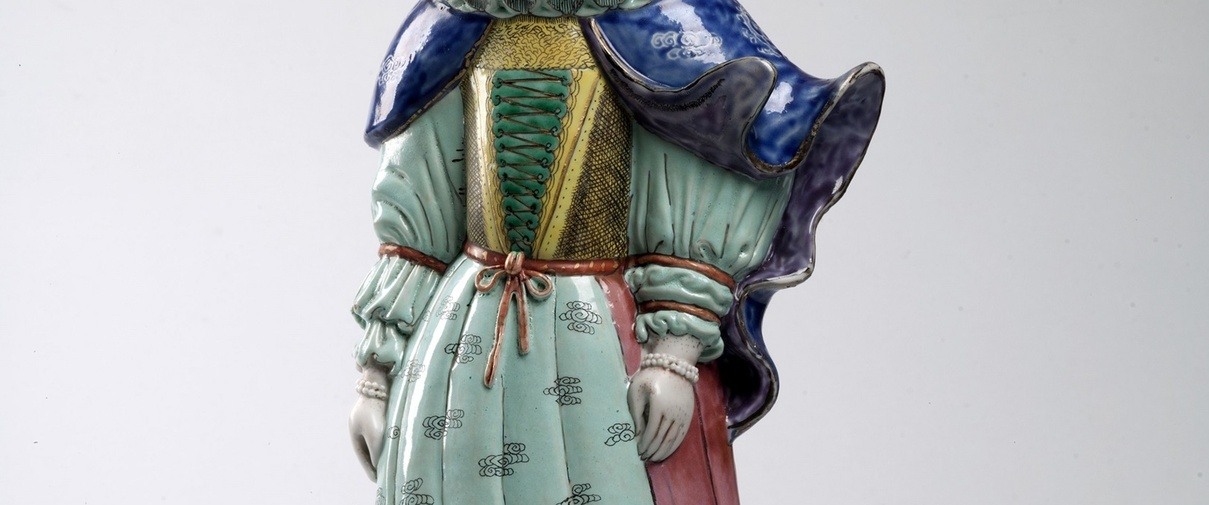Mrs. Duff
In 1602, two VOC (Dutch East India Company) ships from Zeeland hijacked the Portuguese ship San Jago, which had arrived from Asia. The cargo consisted largely of Chinese porcelain, which was auctioned in the Dutch city of Middelburg. This was the first time that a large quantity of Chinese blue-white porcelain ended up in the Netherlands, which became known as kraak porcelain. This name was derived from the Portuguese name for the type of ships they used, including the captured San Jago: caracca, which the Dutch corrupted to ‘kraak’. This was the starting signal for the large-scale shipment of the coveted white gold to the Netherlands by the VOC. Many households in cities such as Amsterdam and Rotterdam were soon decorated with Chinese kraak plates, cups and bowls.
The Dutch elite wants to continue to distinguish themselves from the ‘ordinary citizens’ and therefore seeks an alternative when the novelty of kraak porcelain wears off. They do this by placing private orders with VOC sailors for special decorations and shapes. Officially, private trade in porcelain is prohibited, but despite many warnings from the company, it appears difficult in practice to completely banish this lucrative trade. This ceramic is known as Chine de commande, or ceramics by order. Popular among the elite are dinner services with the family crests on them. However, it can be even more exclusive, and Mrs. Duff is a great example of this. This porcelain statue was probably made in China around 1740 and transported to the Netherlands via the VOC. The woman is dressed in a pink dress with turquoise sleeves and an apron in the same colour. Over it she wears a cape in blue, a millstone collar and a white cap. The face and hands are enamelled in flesh colour and she has a light blush on her cheeks. What is special is that the cape and dress have Chinese decorations, of abstract clouds and archaic dragon medallions. In addition, the shape is somewhat reminiscent of the Chinese ‘blanc de Chine’ Guanyin sculptures. This makes this lady a beautiful combination of East and West. Only a few of these sculptures are known worldwide.
